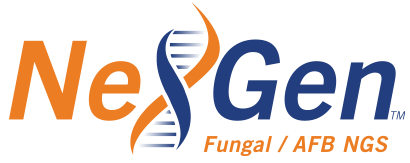The Utility of Hybrid-Capture NGS for Detecting Fungal and Acid-Fast Bacteria in Human Specimens

Next Generation Sequencing (NGS) testing has gained significant importance in the medical clinical laboratory in the United States over the past decade. In recent years, the field of molecular diagnostics has witnessed significant advancements, particularly in the detection of infectious diseases. One such breakthrough is the application of hybrid-capture next-generation sequencing (NGS) technology. NGS technology allows for the rapid and cost-effective analysis of large amounts of genetic information, enabling various applications in clinical diagnostics and research. The utilization of NGS testing in the United States has been driven by advancements in technology, decreasing costs, and increased understanding of the human genome.
Additionally, regulatory bodies like the Food and Drug Administration (FDA) have been actively involved in evaluating and approving NGS-based tests for clinical use. This post aims to explore the utility of hybrid-capture NGS in detecting fungal and acid-fast bacteria in human specimens, highlighting its advantages, limitations, and potential future implications.
Hybrid-capture NGS is a powerful technique that combines the specificity of target capture with the high-throughput capabilities of NGS. It involves the enrichment of specific DNA or RNA targets using complementary probes, followed by sequencing and analysis of the captured targets. This approach allows for the detection and identification of a wide range of pathogens, including fungi and acid-fast bacteria, in a single assay. It offers advantages such as:
- Comprehensive Pathogen Detection: Traditional diagnostic methods often rely on culture-based techniques, which can be time-consuming and limited in their ability to detect fastidious or slow-growing organisms. Hybrid-capture NGS overcomes these limitations by providing a comprehensive view of the microbial community present in a specimen, enabling the detection of both known and novel pathogens.
- Increased Sensitivity and Specificity: The use of specific probes in hybrid-capture NGS enhances the sensitivity and specificity of pathogen detection. By targeting conserved regions of the pathogen's genome, this technique can accurately identify even low-abundance organisms, reducing the risk of false-negative results.
- Simultaneous Detection of Multiple Pathogens: Hybrid-capture NGS allows for the simultaneous detection of multiple pathogens in a single assay. This is particularly advantageous in cases where co-infections or mixed infections are suspected, as it provides a comprehensive overview of the pathogens present, aiding in accurate diagnosis and appropriate treatment selection.
- Potential for Antimicrobial Resistance Profiling: In addition to pathogen detection, hybrid-capture NGS has the potential to provide valuable information about antimicrobial resistance genes. By analyzing the captured targets, this technique can identify genetic markers associated with drug resistance, enabling clinicians to make informed decisions regarding treatment options.
While there are differing versions of Next Generation Sequencing technologies in use, hybrid-capture NGS is the better choice for informative, actionable, and relevant diagnostics. This method offers several advantages over traditional diagnostic techniques, such as culture-based, serological, and PCR methods. Hybrid-capture NGS can detect a wide range of clinically relevant species, including those that are difficult to culture or identify using conventional methods. It also provides a higher sensitivity and specificity, enabling the detection of low-level infections and the differentiation of closely related species. Invasive Fungal disease and Acid-Fast Bacteria testing using hybrid-capture NGS has the potential to improve patient outcomes by enabling early and accurate diagnosis, guiding appropriate (personalized medicine) therapy, and improved disease management strategies. In summary:
- Microbial cfDNA provides a broad overview of the microbial community, while hybrid-capture NGS offers higher sensitivity and specificity for identifying individual Fungal and AFB species.
- Hybrid-capture NGS is often preferred over broad-range PCR due to its targeted approach, higher sensitivity and specificity, greater coverage and depth of sequencing, as well as its flexibility and scalability.
- qPCR plus NGS combines the selective amplification and quantification capabilities of qPCR with the high-throughput sequencing power of NGS. It is suitable for targeted sequencing and quantitative analysis. On the other hand, hybrid-capture NGS utilizes specific probes to selectively capture and enrich DNA regions of interest before sequencing, making it a valuable tool for targeted resequencing and variant discovery.
- Sanger sequencing is a reliable method for sequencing shorter DNA fragments with high accuracy, while hybrid-capture NGS provides higher coverage, throughput, and a more comprehensive view of genetic variations.
- Hybrid-capture NGS testing combines the targeted approach of 16s DNA sequencing with the comprehensive nature of NGS, enabling the analysis of specific genomic regions of interest.
When there is a diagnostic hypothesis of a specific disease, the hybrid-capture NGS panel is a better choice compared to microbial cfDNA, Broad-range PCR, PCG+NGS, Next Generation 16s, and Sanger sequencing assays in the clinical diagnostic arena. The results of the hybrid-capture NGS profile results in a file containing the reading of up to billions of DNA fragments.
Finally, the constant evolution of genomic sequencing technologies allows for increasingly in-depth studies of the genomic material of the most diverse organisms - one way to specifically identify/detect unculturable microorganisms that are otherwise difficult or impossible to analyze. Thus, it will be possible to progressively improve the quality of life through precision medicine, obtain new biotechnological products and develop diagnostic medicine with greater productivity.
Overall, hybrid-capture NGS offers a powerful and comprehensive approach to infectious disease testing, providing clinicians with valuable insights on prominent or “low load” clinically relevant microorganisms allowing for a more accurate diagnosis and appropriate treatment decisions.
